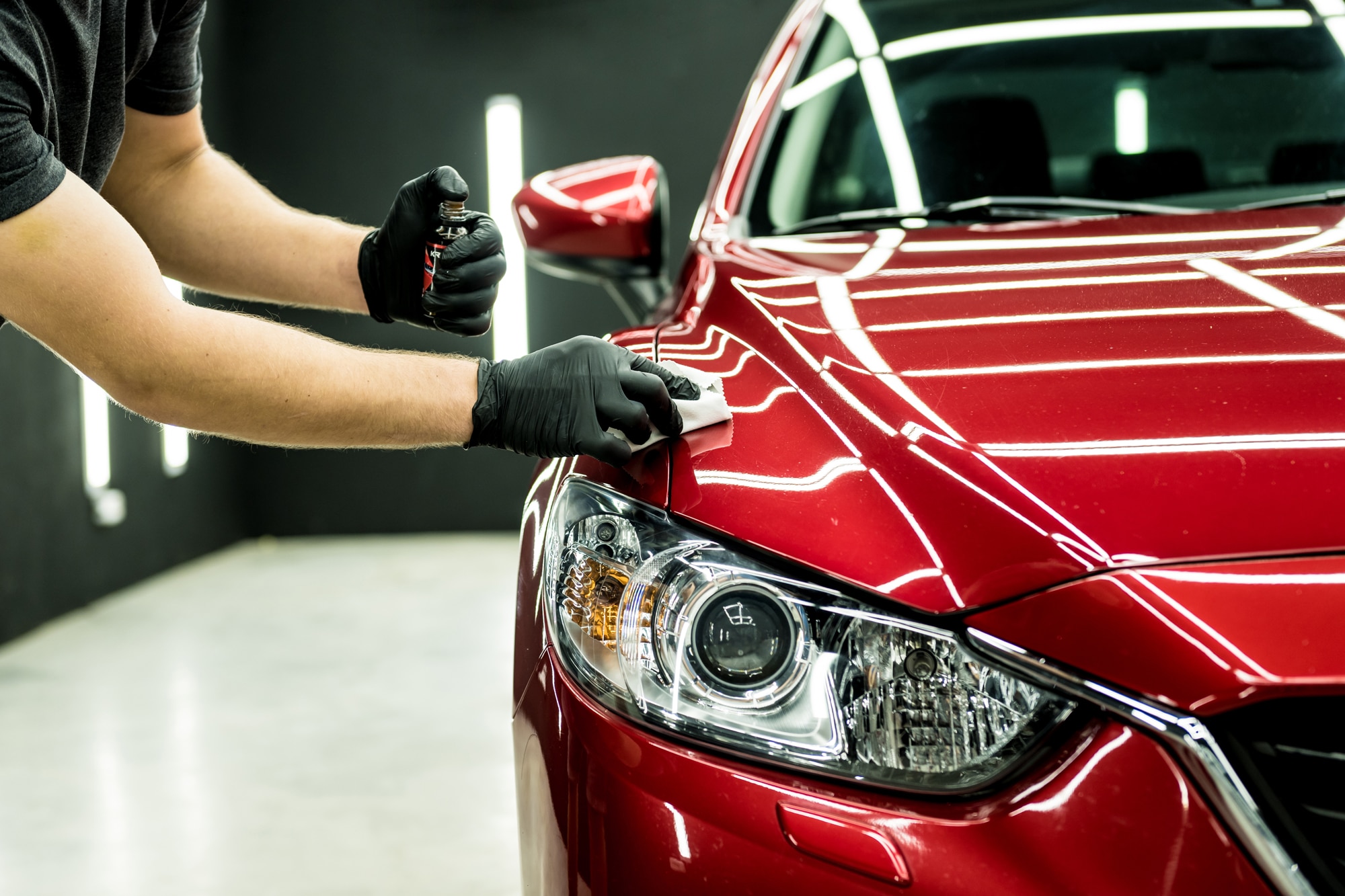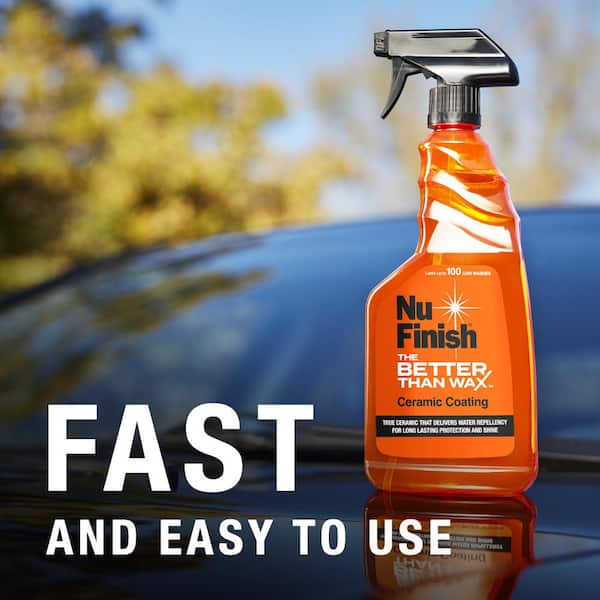The Science Behind the Sturdiness of Ceramic Coating Philadelphia Applications
Why Ceramic Layer Is the Ultimate Solution for a Remarkable Finish
Ceramic layer has actually emerged as a leading solution for those looking for a flawless surface for their cars, thanks to its impressive longevity and protective features. What variables absolutely established ceramic finishing apart?
What Is Ceramic Finish?

When applied appropriately, ceramic coating creates a hydrophobic surface that fends off water and dust, making it less complicated to maintain and cleanse. Unlike conventional waxes or sealers, which typically use temporary protection, ceramic finishings can last for numerous years, depending on the product quality and application technique. The process of applying ceramic layer needs meticulous preparation, including thorough cleansing and sometimes paint improvement, to make sure optimal bonding and efficiency.
Ceramic finishes are not restricted to vehicle surfaces; they can likewise be utilized on different products, consisting of glass, metal, and plastics, offering a flexible option for enhancing protection. Overall, ceramic coating represents a substantial innovation in surface security innovation, combining both visual and practical advantages for a large range of applications.
Benefits of Ceramic Layer
While many surface area protection choices exist, the advantages of ceramic covering stand apart as a result of its distinct buildings and resilient efficiency. Among the key advantages is its phenomenal toughness. Ceramic Coating Philadelphia. Unlike typical wax or sealants that call for constant reapplication, ceramic finishings provide a durable layer that can last for numerous years, significantly decreasing maintenance efforts
An additional notable benefit is improved security versus environmental impurities. Ceramic coverings develop a hydrophobic surface that pushes back water, dirt, and numerous pollutants, making it much easier to clean up. This feature not just maintains the lorry's appearance however also decreases the danger of rust and oxidation, particularly in severe climate condition.
In addition, ceramic layers offer exceptional resistance to UV rays, protecting against fading and deterioration of paint in time. This UV protection is vital for maintaining the visual value of surfaces and cars exposed to guide sunshine.
In addition, the shiny coating attained with ceramic coating enhances the total visual charm, giving surfaces a showroom-quality sparkle. Generally, ceramic coatings represent a considerable advancement in surface protection technology, offering enduring benefits that cater to both functional and aesthetic needs.
Exactly How It Works
Comprehending the scientific research behind ceramic finishes reveals how they offer such remarkable security and durability. At its core, a ceramic finish is a fluid polymer that chemically bonds with the automobile's manufacturing facility paint. This bonding develops a protective layer that is both oleophobic and hydrophobic, repelling water, dust, and oil. The primary part of many ceramic finishings is silicon dioxide (SiO2), which is derived from quartz. This compound contributes to the finishing's firmness and resistance to scratches, UV rays, and environmental pollutants.
The application procedure includes numerous actions, consisting of surface preparation, which is vital to accomplishing optimal bond. As soon as applied, the layer undertakes a healing procedure, during which it sets and creates a semi-permanent bond with the paint surface. This bond is what differentiates ceramic layers from typical waxes and sealants, giving a longer-lasting protective obstacle that can withstand for years.
Additionally, the thickness of the layer can enhance its protective top qualities, making sure that it can endure harsh problems. Ultimately, the scientific research of ceramic layers combines sophisticated products with cutting-edge application strategies to supply an unparalleled degree of protection and aesthetic improvement for cars.
Contrast With Conventional Methods
The benefits of ceramic finishings end up being particularly obvious when compared to standard paint defense approaches such as waxes and sealants. While waxes provide a momentary sparkle, typically lasting a couple of weeks to a number of months, ceramic coverings offer a durable protective layer that can endure for several years. This longevity substantially minimizes the regularity of reapplication, making ceramic finishes a much more economical option gradually.
Furthermore, conventional approaches frequently require extensive preparation and multiple applications to achieve a satisfactory level of defense. In comparison, ceramic finishes bond at a molecular level with the car's surface, creating a robust guard against ecological pollutants like UV rays, acid rain, and roadway salts. This bond boosts the vehicle's resistance to scrapes and swirl marks, which are widespread with typical waxes and sealers.
In addition, the hydrophobic properties of ceramic finishings repel water and dirt, causing much easier cleansing and upkeep. In comparison, Look At This wax and sealant-treated surface areas can attract gunk, necessitating more regular cleaning - Ceramic Coating Philadelphia. On the whole, ceramic coatings not just supply remarkable defense yet also supply a more visually appealing and enduring coating, developing them as the preferred option for discerning vehicle proprietors
Application and Maintenance Tips

Making use of a foam applicator, apply the finish in little areas, complying with the supplier's guidelines pertaining to density and overlap. Allow adequate treating time in between coats, usually 24 hr, Web Site to make certain proper bonding. After application, it is crucial to avoid direct exposure to water or rough elements for at the very least a week to enable the coating to completely heal.
For upkeep, clean the lorry on a regular basis with pH-balanced soaps and stay clear of rough products. Touchless vehicle laundries are advised to lessen damaging. Additionally, using a ceramic upkeep spray can enhance the finishing's hydrophobic homes and long life. Routine assessments for any indicators of wear will aid preserve the covering's honesty and preserve that immaculate finish.
Verdict
In final thought, ceramic coating becomes a superior alternative for accomplishing a remarkable vehicle surface. Its remarkable sturdiness, safety qualities, and hydrophobic properties considerably boost the automobile's look while simplifying upkeep efforts. By forming a robust bond with manufacturing facility paint, ceramic covering properly guards versus scrapes, UV rays, and environmental pollutants. With a life expectancy prolonging several years, this sophisticated solution not only maintains but additionally boosts the overall visual charm of cars, making it a cost-efficient financial investment for cars and truck fanatics.
